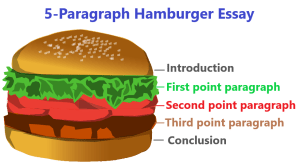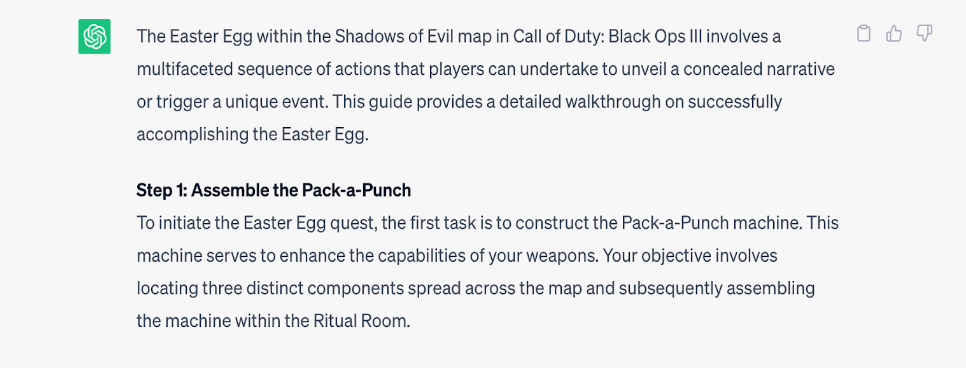by Avery Knott
Avery Knott is a management major with a concentration in marketing from Sturbridge, MA. Avery writes that, “as someone who has grown up with social media as a constant throughout my life, I’ve begun to feel more and more distaste towards the apps and websites that have partially defined my social experience.” She has noticed that “particularly since COVID, interacting with people in person did not reflect the interactions she was having and seeing online.” She enjoyed the freedom that this paper allowed, and shares that “being able to explore a topic in depth that interests me was a freeing opportunity I haven’t had previously.” Avery also enjoys films — her favorite is Apocalypse Now — and has an extensive thrift DVD collection. She is saving money to travel to Europe and New Zealand after graduation — and hopes to delete most of her social media at that point.
On the 21st of October 2022, Daisy Beaton, a beauty company owner, tweeted the following message, “my husband and i wake up every morning and bring our coffee out to our garden and sit and talk for hours. every morning. it never gets old & we never run out of things to talk to. love him so much” (Beaton). What a sweet message from a woman who loves her husband! Right? However, the reaction from her mutuals on Twitter was very different from what you may expect. She received replies such as: “Who has time to sit and talk for hours everyday? Must be nice.” And “I wake up at 6am, shower and go to work for a shift that is a minimum of 10 hours long. This is an unattainable goal for most people” (Williams). Daisy even received comments criticizing her relationship such as, “I’m happy for you but it’s just smug, self satisfied bragging if it’s true. Your partner is most likely embarrassed by the tweet, or at least should be” (Just Interested). And “You haven’t been married long have you?”
If you’re anything like me, you’re probably shocked by the reaction that this innocent Tweet provoked. You’d probably also be shocked to learn that it’s not an isolated event. In a now deleted Tweet, singer/songwriter Mitski said, “I wanted to speak with you about phones at shows. … Sometimes when I see people filming entire songs or whole sets, it makes me feel as though we are not here together” (Gordon) The response was fiery and hateful, with twitter users calling her “elitist” and “ableist,” claiming her comment was “insensitive to people who struggle with disabilities like hearing/vision impairments or memory related disabilities like ADHD and depression, and are filming for that reason” (Gordon) One Twitter user even replied “Bestie that’s great and all, but some of us have mental health issues that cause dissociation & i film to remember the moment. i’m not looking at my phone the entire time just to press record on” (Gordon). The examples go on and on. There was a person who was criticized as insensitive because they posted about a peanut butter and jelly sandwich (Braindead Bird App) and certain people have allergies, the woman (i bless the rains down in castamere) who was labeled as misogynistic for making her male neighbor a bowl of chili, the spreadsheet (“Someone”) listing historic and modern authors and citing reasons they were “problematic,” and TikTok creators who were told not to speak Spanish because they were “colonizing it.”
Personally, I felt that during the Covid lockdowns is when I first began to see conversations like these circulating more and more frequently. Now, it seems nearly impossible to avoid these “chronically online” posts, as they are frequently labeled in popular culture. “Chronically online” is the official term used by the internet for individuals who spend an incredible amount of their time online, and are addicted to the internet. Chronically online interactions are characterized by individuals calling out other’s behavior as “problematic” or who treat generally normal behaviors in a nonsensical way (Al-Heeti). Seeing an increasing number of online interactions like this made me extremely concerned. It seems to me that no one can have a normal conversation or interaction anymore. No matter how innocent or unassuming the comment, someone always seems to find a way to claim that the author is a racist, misogynist, ableist, or any other “-ist” you can think of. Why was this happening? How were these types of unintentionally absurdist conversations becoming the norm in online communities? Do the frequencies of these online interactions affect the way we interact in real life? How will these types of behaviors affect impressionable children who spend a large amount of their time online? The more I sat with it, the more I knew that I had to look into this. I needed to find out whether these types of chronically online interactions could seep into our everyday lives. Perhaps they have already. I don’t want to imagine a world where casual water-bubbler chat could easily morph into cries of racism or misogyny. What causes the chronically online to exist, and what threat do these chronically online interactions have on our everyday communication?
Quickly I learned that I was not the only one noticing this trend, and I was not the only one upset by it. In an article about the chronically online titled “Every Chronically Online Conversation is the Same” author Rebecca Jennings describes her own frustrations with these types of interactions. She claims that navigating these interactions has turned into a sport, describing how “it’s become something of a sport to unearth these sorts of replies, the ones where strangers make willfully decontextualized moral judgments on other people’s lives” (Jennings) Jennings also claims that these types of interactions became increasingly popular during Covid because “our collective thirst for gossip and controversy, particularly during and post-lockdown, has trained many to actively seek out content that aggravates us and immediately grasp onto its most extreme interpretation” (Jennings). She goes on to argue that chronically online interactions all are conversations that would never happen in real life. Finally, she concludes by calling for peace and asking people to recognize the absurdism of these behaviors. She even puts blame on the platforms themselves, saying: “People in their regular lives don’t react this way to things. It’s only on platforms where controversy and drama are prioritized for driving engagement where we’re rewarded for despising each other” (Jennings). Jennings calls the chronically online opinions wrong and blames their existence on platforms that prioritize outrage in order to keep people on their applications for longer. But does social media have the power to cause a real-life public discourse shift?
Doug Fodeman would argue that text messaging plays a greater role in any sort of communication shift. In his article “The Impact of Technology on Socialization and Communication Skills,” Fodeman points out an alarming trend he’s noticed in the younger generation: the preference of children and teens to resort to text messaging for important or emotional conversations. He describes interviews he conducted with middle school students that revealed situations such as a 5th grade boy who was too nervous to talk to a girl he was interested in, so he used a chat room and email to communicate with her. There were 7th and 8th graders who used social media to lash out angrily at someone because they didn’t want to risk the conversation in person. And even a 6th grader whose feelings were hurt because she felt excluded from a group and chose to lash out in a group text instead of speaking to the person face-to-face about hurting her feelings. Fodeman argues that this reliance on text is extremely damaging to a child’s development because:
Texting is devoid of so many important aspects of human interaction! It strips away the inflection of our voice, our body language, our facial expressions, and our ability to assess and respond in real-time as a result of these challenging interactions. Engaging in tough life conversations not only builds our communication skills, but arguably, this active participation also serves to help build our self-esteem and self-worth. (Fodeman)
Fodeman believes that the more children learn to rely on text and IM for important conversations, the less prepared they will be for the world around them when they are grown. This trend may be more alarming in our younger generations, but it certainly isn’t confined to them. Older adults are also becoming much more reliant on text or IM for interacting, a dangerous trend that conditions people to rely on these “easier” forms of communication, rather than taking conversations face-to-face and being forced to think and respond in the moment, right in front of one another. The less we talk face-to-face, the less we are able to properly communicate our feelings and thoughts to one another when in a real-life conversation. Just like with playing an instrument or practicing a sport, when we talk to each other less, we fall out of practice.
Between text messaging and social media, the younger and older generations are simply spending too much time online, when they could be engaging in real life conversations. This phenomenon is detailed in S. Adam Seagrave’s article “The 50/50 Problem: How the Internet is Distorting Our Reality” where Seagrave discusses “the 50/50 problem” where “more than 50 percent of Americans spend more than 50 percent of their waking hours living in virtual, artificial worlds rather than the given, created one in which their bodies exist” (Seagrave). The 50/50 point was reached sometime around 2015 and is likely much higher now in a post-pandemic world. Seagrave argues that this 50/50 problem represents a serious societal tipping point, saying, “When most people are living most of their lives in worlds other than the real, common one they share with their fellow citizens, they are rendered unable to find common ground on issues of policy or principle” (Seagrave). He also points to the fact that the 50/50 point was reached right before the now infamous 2016 Presidential election and argues that the increased screen time directly resulted in political radicalization, caused by “a more thorough and profound social dislocation and crisis of information than humans have ever encountered before” (Seagrave). Seagrave also argues that the idea of the “world wide web” is dead and the internet has ceased to be a connecting resource; it has instead grown to separate people more than it brings them together. He concludes the article by calling for the government to address the 50/50 problem and argues for widespread reform.
Rebecca Jennings has proposed that social media platforms are the ones that perpetuate this crisis, and she believes that these chronically online interactions don’t exist face-to-face. Doug Foderman theorized that people’s propensity to shy away from confrontation and rely on text was concerning if not outright dangerous. And Adam Seagrave believes that the 50/50 problem represents a dangerous tipping point that leads to polarization and division. These theories made sense to me, but yet I still felt like I had only scratched the surface of this topic. I still had the feeling that I didn’t fully understand what was causing the chronically online to exist. I wanted to know if there was any data or studies that supported these theories. I needed to know to what extent these issues had the capability to impact the real world, the face-to-face world that we exist in, as well as how we interact with each other. What power do the chronically online have once they have left their online world?
When wondering why time spent online may be correlated to radicalism, something called the “echo chamber effect” may help fill in some cracks. Matteo Cinelli, along with a team of researchers, first proposed this “echo chamber effect” in their paper “The Echo Chamber Effect on Social Media.” They analyzed over 100 million pieces of discourse on four major social media platforms, more specifically controversial political topics and how much reach they were given by the algorithm of each social media platform. They also analyzed how users on each platform react and interact with certain types of content. Ultimately, they concluded that, “the aggregation in homophilic clusters of users dominates online dynamics” (Cinelli 5). Basically, they determined that across all platforms, people collected themselves into groups that agreed with all of the same political opinions that they did. This behavior, they argue, created the echo chamber effect. The echo chamber effect is what they title the tendency of social media users to aggregate in like-minded groups. Cinelli et al. defines social media echo chambers as:
environments in which the opinion, political leaning, or belief of users about a topic gets reinforced due to repeated interactions with peers or sources having similar tendencies and attitudes. Selective exposure and confirmation bias (i.e., the tendency to seek information adhering to pre-existing opinions) may explain the emergence of echo chambers on social media. (1)
Overall, this means people online naturally have the tendency to only communicate with people who believe the exact same things that they do. Because of this, their opinions are never challenged, and they never get an opportunity to hear the other side say their piece. Thus, their own opinions are reinforced and strengthened. This is how radicalism may develop from social media use. The more time people spend on social media, the less time people are exposed to other opinions, and the more they believe their own ideas are 100% right, and everyone else’s ideas are 100% wrong.
I now understand how people may be radicalized by the internet, but how may that affect the way people think and interact with each other in real life? A theory first proposed by philosopher Jean Baudrillard may help explain. In “Power and Politics in Hyperreality: The Critical Project of Jean Baudrillard,” Professor Timothy W. Luke explains and examines Baudrillard’s theory of “hyperreality.” Baudrillard defines hyperreality as “the fabricated system of meaning that limits human participation in the world to the role of consumer or responder, rather than producer or initiator” (qtd. in Luke 347). Essentially, hyperreality is a system or world in which people are forced to do nothing but consume what’s around them (both literally and figuratively), whereas reality is the real world that we exist in, where people are freely able to consume or produce whatever they want. A great example that Baudrillard often gives of hyperreality is Disneyland. Disneyland is a place where visitors quite literally are meant to consume everything around them. They buy Disney toys, tickets for Disney rides, Disney food, Disney everything. The important part of Baudrillard’s hyperreality concept is that not only are visitors physically consuming what’s around them, but they are also mentally consuming it. Disneyland is its own small hyperreality within the greater reality we exist in, because visitors don’t have to ever imagine this desirable fantasy world. They can simply consume the fantastical images and ideas and characters that Disney has created for them, and suddenly they are in that world. When in Disneyland, visitors do not have to produce anything using their imagination, all of the dreams and fantasies they could ever ask for are being spoon-fed to them by Disney via the characters, the landscape, the buildings, all of it. As Luke summarizes, “Baudrillard shows how human needs increasingly have no autonomous basis in an authentic conception of humanity outside of sign-driven commodity exchange. In hyperreality, needs are instead grounded in the prepacked expectations of cultural codes conveyed to individuals as part and parcel of their aestheticized duty to consume” (367).
So, what does this theory have to do with how people interact with the internet? The internet is a perfect hyperreality according to Baudrillard’s theory. People on the internet are free to consume videos, tweets, stories, information, or whatever else they can find. The internet is a free safe haven from reality. On the modern internet, you never have to think or use your imagination at all. One can simply scroll and scroll and scroll and scroll their favorite social media sites and never have to think a single thought of consequence. Baudrillard argues that involving oneself in a hyperreality is a dangerous and worrying rabbit-hole of a way to spend your time. He argues that people can quickly lose sense of what is real and what is hyperreal, and the more time spent within the hyperreal world makes it harder and harder to distinguish reality from fantasy. When you never leave the hyperreal world, who is going to challenge your views on life? If someone was born and raised in Disneyland, and they never leave Disneyland, who is there to tell them that Tinkerbell and Snow White aren’t real? This operates the same way as the internet does. If someone spends all of their time online, who is there to tell them that people don’t interact the same way in person that people do on Twitter? Who is there to explain that these chronically online interactions don’t exist outside of the internet?
You may be wondering, what happens when people do leave their hyperreal world? It’s impossible for them to never be exposed to outside opinions, right? When people do, on rare occasions, exit their niche existence where everyone agrees with the same things they do, arguments happen. The types of arguments and conflicts that began this paper. Online arguments do happen, and when they do, they are often explosive and fiery. “How dare anyone have a different opinion than my own!” is generally the gist of the argument. But why don’t we see arguments like these reflected in the public discourse? Do these online arguments carry into the real world? The answer to this is a resounding no according to “‘Arguments Online, But in School we Always Act Normal’: The Embeddedness of Early Adolescent Negative Peer Interactions Within the Whole of Their Offline and Online Peer Interactions.” Conducted by a team of psychologists from the University of Antwerp, the study followed a large group of preteens and evaluated their interactions with others online, as well as their interactions with their peers at school. The study was able to determine that: “Due to the particular affordances of digital technologies, such as the potential to be anonymous, 24/7 availability, lack of parental supervision, and less non-verbal cues, the way adolescents interact with each other online often differs from their offline interactions. (Pabian, et al. 2) The students interacted very differently online than they did in person. It was determined that online they had:
different or exaggerated online versions of behavior, compared to how they act offline. This phenomenon has been explained by the ‘online disinhibition effect’: When individuals go online, they often behave less restrained than they would in an offline context. In this way, adolescents’ online behavior is governed by other rules and expectations than their offline behavior. (Pabian, et al. 2)
When people are online, all sense of consequence is removed from their actions and words. When you don’t have to look someone in the eyes, and can stay anonymous through a profile picture, it becomes much easier to be nasty or irreverent to those you are interacting with. This “online disinhibition effect,” when combined with the echo chamber effect that causes a radicalization of thought, leads to these chronically online behaviors, which are incredibly disconnected from reality. The study describes that online arguments and fights were rarely carried over to the offline world, noting that:
The lack of continuation of online negative peer interactions in the offline environment was explained by the experienced disconnection between online and offline communication styles. Recurring in the interviews was that when adolescents had conflicts online, the next time they met each other face-to-face, they often acted as if nothing happened. (Pabian, et al. 9)
The fact that the online arguments were rarely carried over into the offline world just proves that these online arguments are ones that do not, (or cannot) exist in the real world. Saying mean things to someone is 100 times harder when you have to look them in the eye while you say it. That, paired with the absurdist topics that these chronically online arguments are often about, leads to a type of interaction that simply does not occur in real life. These concepts are absolutely not exclusive to adolescents. The types of discord that happen on the internet cease to exist when people are face-to-face.
When you take all of the information together, a worrying trend appears. Most of the average person’s waking hours are spent consuming information from an internet that is designed to parrot back one’s own ideas and thoughts, leading to a radicalization of thought that is disconcerting and widespread. Arguments and discord that happen online do not exist in real life. When these ideas are considered along with Baudrillard’s theory of hyperreality, we’re left with a population that may not understand how to properly interact with one another in reality. This, taken in tandem with the 50/50 problem, poses a dangerous reality. We know people are spending more than half of their waking time online, but what happens as that percentage increases? What will the world look like when the average person spends 90% of their waking hours online? The less time that our population spends in reality, the harder it will become for the population to distinguish reality from the hyperreality. The “Arguments Online, But in School We Always Act Normal” study shows that at the moment, people tend to snap back to normalcy when they interact in real life. But what will happen to the world when we only spend a small amount of time in the real world? Will people snap back to normal interactions in 20 or 30 years from now, or will the chronically online interactions that are confined to the internet spread into our face-to-face discourse? What kind of future will high levels of internet use lead to?
Curing the chronically online is possible through one avenue: change the incredibly addictive algorithms that are used on social media sites. This would allow people to spend less time online, so they can become reconditioned to interacting with people in real life social situations. In order for that to become a reality, more research needs to be done. While looking into this topic, I found an overabundance of research relating to how social media can cause political polarization and radicalization but struggled to find a single paper on social media’s effects on general discourse. More research is needed to understand exactly how social media has the power to not just create far right and far left leaning individuals, but also how it can create people who are unable to maintain a mundane conversation without bursting into outrage. The exact effects social media has on people’s personalities and neuroticisms needs to be looked into, ignoring any political ramifications. It’s also important to find out the long term effects social media use can have on impressionable children, especially as they grow into adults who have spent no part of their life without the constant entertainment source that the internet provides. It is through further research of this type that we can better understand the discourse that social media has created and understand where our society may be headed if no changes are made.
Works Cited
Al-Heeti, Abrar. “’Chronically Online’: What the Phrase Means, and Some Examples.” CNET, September 9, 2021.
Beaton, Daisey [@lilplantmami]. “my husband and i wake up every morning and bring our coffee out to our garden and sit and talk for hours. every morning. it never gets old & we never run out of things to talk to. love him so much.” Twitter, 21 October 2022.
Braindead Bird App [@tragicbirdapp]. “possibly THE twitter moment.” Twitter, 10 Oct. 2022, 3:22 p.m.
Cinelli, Matteo, et al. “The Echo Chamber Effect on Social Media.” Proceedings of the National Academy of Sciences, vol. 118, no. 9, 2021, pp. 1-8.
Fodeman, Doug, and Alison Moerland. “The Impact of Technology on Socialization and Communication Skills.” Brookwood School, Brookwood School, 7 Feb. 2022.
Gordon, Eden Arielle. “A Beloved Indie Rocker Asked Fans to Put Their Phones down. Then Things Got Ugly.” Slate Magazine, Slate, 24 Mar. 2022.
I Bless The Rains Down in Castamere [@Chinchillazllla] “several guys moved in next door, students I guess. and I’ve gotten two confused doordash drivers for them in the last week, and their trash can was completely overflowing with pizza boxes. i don’t think they cook. i am feeling such a strange motherly urge to feed these boys.” Twitter, 7 November 2022.
Jennings, Rebecca. “Every ‘Chronically Online’ Conversation Is the Same.” Vox, Vox, 7 Dec. 2022,
Just Interested [@JustInt22415587]. “What is the purpose of this communication? Im happy for you but it’s just smug, self satisfied bragging if it’s true. Your partner is most likely embarrassed by the tweet, or at least should be. That is unless you are flogging something.” Twitter, 23 October 2022.
Luke, Timothy W. “Power and Politics in Hyperreality: The Critical Project of Jean Baudrillard.” The Social Science Journal, vol. 28, no. 3, 1991, pp. 347–367.
Pabian, Sara, et al. “‘Arguments Online, but in School We Always Act Normal’: The Embeddedness of Early Adolescent Negative Peer Interactions within the Whole of Their Offline and Online Peer Interactions.” Children and Youth Services Review, vol. 86, 2018, pp. 1–13.
Seagrave, S. Adam. “The 50/50 Problem: How the Internet Is Distorting Our Reality.” Public Discourse, The Public Discourse, 3 Apr. 2021.
“Someone on Twitter made a list of problematic writers.” Reddit, 18 Aug. 2022, 12:31 p.m.,
Williams, James [@jamesyjables]. “I wake up at 6am, shower and go to work for a shift that is a minimum of 10 hours long. This is an unattainable goal for most people.” Twitter, 22 October 2022.














